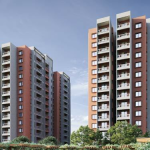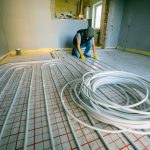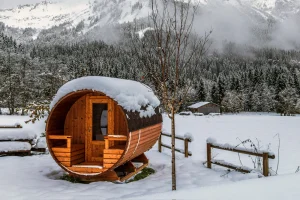
It wasn’t long ago that I found myself keeping cool with a single outdated fan during the sweltering summer months. Living on a tight budget, the idea of high energy bills was terrifying. But feeling comfortable at home shouldn’t break the bank. With perseverance and a little creativity, I discovered how to manage home cooling without emptying my wallet.
Get Smart About Ventilation
One of the first changes I made was to improve airflow throughout my home. By simply opening windows on opposite sides and creating a cross-breeze, I could cool my space naturally. Another trick? Timing the opening of windows strategically to let in the cooler night air and closing them during the day to trap in this coolness. Don’t forget to use fans for additional circulation; you’ll be amazed at how much cooler a room can feel.
Another ventilation approach involved installing small exhaust fans in the kitchen and bathroom. These fans helped eliminate the humidity and warm air generated by cooking and showers, keeping indoor temperatures more comfortable. It’s a manageable installation with long-term benefits. Moreover, they can function discreetly, ensuring your home remains fresh without much effort.
Focus on Insulation
Initial costs can be intimidating, but adequately insulating your home saves money over time. While I couldn’t afford a full retrofit, small steps like sealing window and door gaps with weather stripping made a noticeable difference. Keeping the air-conditioned air from sneaking outside ensures energy isn’t wasted.
While on the topic of insulation and energy efficiency, I sometimes encountered situations where larger repairs or services were necessary. In these cases, considering affordable AC repair options became vital for maintaining an optimal indoor temperature without breaking the bank.
Power of Plants
Embracing indoor plants was not only pleasing to the eye but also effective in cooling my environment. Plants release moisture back into the air, helping reduce indoor temperatures. Placing them strategically near windows and entry points gave my home a refreshing lift. Plus, they purify the air!
Limit Light Usage
Switching to compact fluorescents or LEDs reduced my electricity bill and the heat generated by incandescent bulbs. Additionally, I became more conscious of turning off lights in unused rooms, reinforcing this habit by installing motion sensors.
Make Use of Curtains and Shades
I quickly learned the power of managing sunlight. During the hottest times of the day, keeping curtains or shades drawn on sun-facing windows makes a difference. This simple technique helps prevent my living space from turning into a stuffy greenhouse. Opt for light-colored linens to reflect sunlight if possible.
While curtains and shades do wonders during the day, I found using thermal-backed curtains particularly useful. They are specifically designed to block out heat and cold, adding an additional layer of protection from outside elements. Even on significantly warm days, the difference in indoor comfort was noticeable, adding great value for their cost.
Find Affordable Cooling Solutions
Fans proved to be invaluable on unbearably hot days, utilizing oscillating models for an even spread. Cost-effective cooling approaches, like self-made DIY air coolers, operate with a fan and ice packs to bring relief without the steep cost of an AC unit. Don’t underestimate the charm of cold showers every now and then, which help lower body temperature almost instantaneously.
During periods of stretchingly persistent heat, I found temporary public cooling centers too helpful. These community spaces offered a refuge during the most challenging segments of summer, allowing my living space a period of rest from constant cooling efforts. Considering such alternatives came in handy when personal efforts needed an extra boost.
Keep Heat-Producing Appliances in Check
Ironically, some appliances meant to make our lives comfortable add heat to our homes. Cooking in the oven during summer was something I started avoiding. Instead, I embraced microwave dinners and outdoor grilling. Similarly, avoid using dryers on particularly hot days—opting for air drying is easier on both the environment and your wallet. Small changes like these can cut down on excess indoor heat.
Switching to energy-efficient appliances was an investment I prioritized as my budget allowed. Not only did this choice positively impact my energy bills, but it also emitted less heat compared to older models. This transition further complemented my efforts in creating a cooler home environment without constantly relying on high-energy cooling solutions.
Stay Informed and Monitor
Finally, by paying attention to weather forecasts, I learned to anticipate and prepare for heat waves. This awareness allowed me to plan alternative cooling strategies ahead, like visiting air-conditioned public spaces or scheduling outdoor activities during cooler hours.
Keeping an energy consumption diary allowed me to track pa tterns, adjust habits, and elucidate the effects of my applied strategies. This personal record empowered a mindful approach toward resource usage, aligning well with my budget-conscious objective without compromising comfort.
Cooling a home on a budget is entirely possible with some tactical adjustments. By adopting these strategies, I’ve found deeper comfort in my living space and greater peace of mind seeing the energy bill slide. Give one of these approaches a try, and may your abode stay cool and your savings high!








